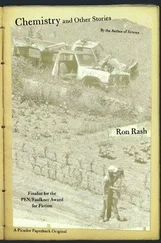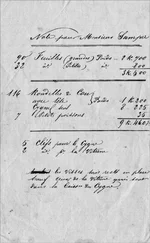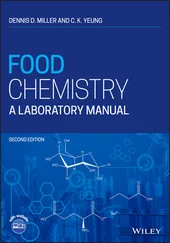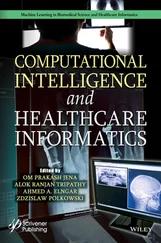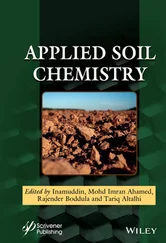Jan Almlöfand Odd Gropen, Relativistic Effects in Chemistry.
Donald B. Chesnut, The Ab Initio Computation of Nuclear Magnetic Resonance Chemical Shielding.
Volume 9 (1996)
James R. Damewood, Jr., Peptide Mimetic Design with the Aid of Computational Chemistry.
T. P. Straatsma, Free Energy by Molecular Simulation.
Robert J. Woods, The Application of Molecular Modeling Techniques to the Determination of Oligosaccharide Solution Conformations.
Ingrid Petterssonand Tommy Liljefors, Molecular Mechanics Calculated Conformational Energies of Organic Molecules: A Comparison of Force Fields.
Gustavo A. Arteca, Molecular Shape Descriptors.
Volume 10 (1997)
Richard Judson, Genetic Algorithms and Their Use in Chemistry.
Eric C. Martin, David C. Spellmeyer, Roger E. Critchlow Jr., and Jeffrey M. Blaney, Does Combinatorial Chemistry Obviate Computer‐Aided Drug Design?
Robert Q. Topper, Visualizing Molecular Phase Space: Nonstatistical Effects in Reaction Dynamics.
Raima Larterand Kenneth Showalter, Computational Studies in Nonlinear Dynamics.
Stephen J. Smithand Brian T. Sutcliffe, The Development of Computational Chemistry in the United Kingdom.
Volume 11 (1997)
Mark A. Murcko, Recent Advances in Ligand Design Methods.
David E. Clark, Christopher W. Murray, and Jin Li, Current Issues in De Novo Molecular Design.
Tudor I. Opreaand Chris L. Waller, Theoretical and Practical Aspects of Three‐Dimensional Quantitative Structure–Activity Relationships.
Giovanni Greco, Ettore Novellino, and Yvonne Connolly Martin, Approaches to Three‐Dimensional Quantitative Structure–Activity Relationships.
Pierre‐Alain Carrupt, Bernard Testa, and Patrick Gaillard, Computational Approaches to Lipophilicity: Methods and Applications.
Ganesan Ravishanker, Pascal Auffinger, David R. Langley, Bhyravabhotla Jayaram, Matthew A. Young, and David L. Beveridge, Treatment of Counterions in Computer Simulations of DNA.
Donald B. Boyd, Appendix: Compendium of Software and Internet Tools for Computational Chemistry.
Volume 12 (1998)
Hagai Meirovitch, Calculation of the Free Energy and the Entropy of Macromolecular Systems by Computer Simulation.
Ramzi Kuttehand T. P. Straatsma, Molecular Dynamics with General Holonomic Constraints and Application to Internal Coordinate Constraints.
John C. Shelleyand Daniel R. Bérard, Computer Simulation of Water Physisorption at Metal–Water Interfaces.
Donald W. Brenner, Olga A. Shenderova, and Denis A. Areshkin, Quantum‐Based Analytic Interatomic Forces and Materials Simulation.
Henry A. Kurtzand Douglas S. Dudis, Quantum Mechanical Methods for Predicting Nonlinear Optical Properties.
Chung F. Wong, Tom Thacher, and Herschel Rabitz, Sensitivity Analysis in Biomolecular Simulation.
Paul Verwerand Frank J. J. Leusen, Computer Simulation to Predict Possible Crystal Polymorphs.
Jean‐Louis Rivailand Bernard Maigret, Computational Chemistry in France: A Historical Survey.
Volume 13 (1999)
Thomas Ballyand Weston Thatcher Borden,Calculations on Open‐Shell Molecules: A Beginner's Guide.
Neil R. Kestnerand Jaime E. Combariza,Basis Set Superposition Errors: Theory and Practice.
James B. Anderson,Quantum Monte Carlo: Atoms, Molecules, Clusters, Liquids, and Solids.
Anders Wallqvistand Raymond D. Mountain,Molecular Models of Water: Derivation and Description.
James M. Briggsand Jan Antosiewicz,Simulation of pH‐dependent Properties of Proteins Using Mesoscopic Models.
Harold E. Helson,Structure Diagram Generation.
Volume 14 (2000)
Michelle Miller Francland Lisa Emily Chirlian, The Pluses and Minuses of Mapping Atomic Charges to Electrostatic Potentials.
T. Daniel Crawfordand Henry F. Schaefer III, An Introduction to Coupled Cluster Theory for Computational Chemists.
Bastiaan van de Graaf, Swie Lan Njo, and Konstantin S. Smirnov, Introduction to Zeolite Modeling.
Sarah L. Price, Toward More Accurate Model Intermolecular Potentials For Organic Molecules.
Christopher J. Mundy, Sundaram Balasubramanian, Ken Bagchi, Mark E. Tuckerman, Glenn J. Martyna, and Michael L. Klein, Nonequilibrium Molecular Dynamics.
Donald B. Boydand Kenny B. Lipkowitz, History of the Gordon Research Conferences on Computational Chemistry.
Mehran Jalaieand Kenny B. Lipkowitz, Appendix: Published Force Field Parameters for Molecular Mechanics, Molecular Dynamics, and Monte Carlo Simulations.
Volume 15 (2000)
F. Matthias Bickelhauptand Evert Jan Baerends, Kohn‐Sham Density Functional Theory: Predicting and Understanding Chemistry.
Michael A. Robb, Marco Garavelli, Massimo Olivucci, and Fernando Bernardi, A Computational Strategy for Organic Photochemistry.
Larry A. Curtiss, Paul C. Redfern, and David J. Frurip, Theoretical Methods for Computing Enthalpies of Formation of Gaseous Compounds.
Russell J. Boyd, The Development of Computational Chemistry in Canada.
Volume 16 (2000)
Richard A. Lewis, Stephen D. Pickett, and David E. Clark, Computer‐Aided Molecular Diversity Analysis and Combinatorial Library Design.
Keith L. Peterson, Artificial Neural Networks and Their Use in Chemistry.
Jörg‐Rüdiger Hill, Clive M. Freeman, and Lalitha Subramanian, Use of Force Fields in Materials Modeling.
M. Rami Reddy, Mark D. Erion, and Atul Agarwal, Free Energy Calculations: Use and Limitations in Predicting Ligand Binding Affinities.
Volume 17 (2001)
Ingo Mueggeand Matthias Rarey, Small Molecule Docking and Scoring.
Lutz P. Ehrlichand Rebecca C. Wade, Protein‐Protein Docking.
Christel M. Marian, Spin‐Orbit Coupling in Molecules.
Lemont B. Kier, Chao‐Kun Cheng, and Paul G. Seybold, Cellular Automata Models of Aqueous Solution Systems.
Kenny B. Lipkowitzand Donald B. Boyd, Appendix: Books Published on the Topics of Computational Chemistry.
Читать дальше

